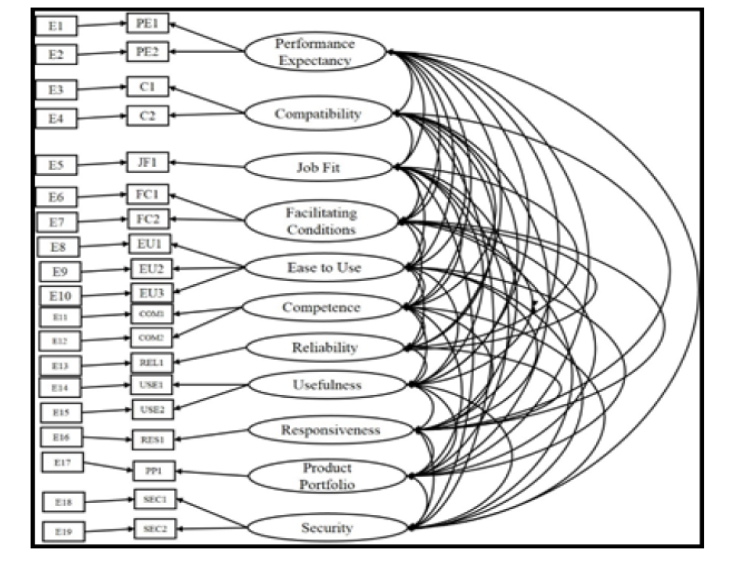


Indian Journal of Science and Technology
DOI: 10.17485/IJST/v13i36.1596
Year: 2020, Volume: 13, Issue: 36, Pages: 3754-3761
Original Article
Sumeet Gill1, Priya Vij2*
1Supervisor, Department of Mathematics, MDU, Rohtak, 124001, India
2Scholar, Department of Computer Sciences and Applications, MDU, Rohtak, 124001, India
*Corresponding Author
Email: [email protected]
Received Date:08 September 2020, Accepted Date:05 October 2020, Published Date:08 October 2020
The present era of eGovernance is considered as technology-driven which enhance productivity along with amplified failure rates. The process, citizens,technology, and resources are the pillars of eGovernance but the emphasis is only upon technology which postulates for the development of updated integrated eGovernance model for accomplishing future requirements. Objectives:The present study endeavors to discover the diverse vital constructs to develop an integrated eGovernance model to augment efficiency and social influence. Methods: The NeSDA and OSI methodology are taken as a basis to extract constructs of eGovernance model and attained constructs and relative relationships ascertained through Exploratory and Confirmatory Factor Analysis (EFA and CFA). Structural Equation Modelling (SEM) is applied to develop and propose an integrated eGovernance model to augment efficiency and social influence. Findings: The empirical outcome illustrate the significant positive impact of eleven accumulated constructs on Intention to Use and Service Quality of the eGovernance initiative which ultimately augments efficiency and social influence of eGovernance initiatives. Novelty: The proposed model makes a significant contribution by integrating vital constructs on the basis of empirical outcomes and applies them to the context of the eGovernance. The suggested model will guide the policymakers and developers of eGovernance systems to focus on identified constructs to maintain and enhance efficiency and social influence.
Keywords: Structural equation modeling; intension to use; social influence;competence; transparency; efficiency
© 2020 Gill & Vij. This is an open-access article distributed under the terms of the Creative Commons Attribution License, which permits unrestricted use, distribution, and reproduction in any medium, provided the original author and source are credited. Published By Indian Society for Education and Environment (iSee).
Subscribe now for latest articles and news.